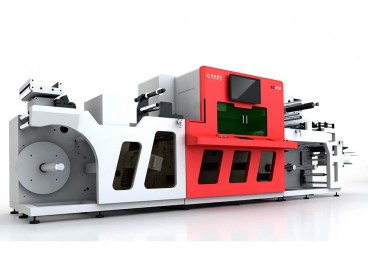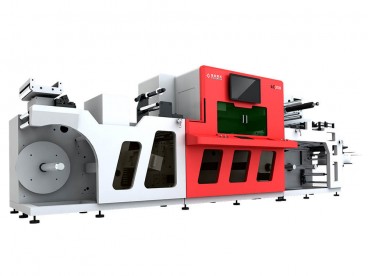What is Die Cutting?
Traditional die-cutting refers to a post-processing cutting process for printed materials. The die-cutting process allows printed materials or other paper products to be cut in accordance with a pre-designed graphic to produce a die-cutting knife plate, so that the shape of the printed material is no longer limited to straight edges and corners. Conventional die-cutting knives are assembled into a die-cutting plate based on the drawing required for the product design. Die-cutting is a forming process in which a print or other sheet is cut to the desired shape or cut mark under pressure. The creasing process uses a creasing knife or a creasing die to press a line mark into the sheet by pressure, or a roller to roll a line mark into the sheet so that the sheet can be bent and formed in a predetermined position.
As the electronics industry continues to develop rapidly, especially with the expanding range of consumer electronics products, die-cutting is not only limited to the post-processing of printed products (e.g. labels), but is also a method of producing auxiliary materials for industrial electronics. Commonly used in: electro-acoustic, healthcare, battery manufacturing, display signs, safety and protection, transportation, office supplies, electronics and power, communications, industrial manufacturing, home leisure and other industries. Used in mobile phones, MID, digital cameras, automotive, LCD, LED, FPC, FFC, RFID and other product aspects, gradually used in the above products for bonding, dustproof, shockproof, insulation, shielding, thermal conductivity, process protection, etc. Materials used for die-cutting include rubber, single and double sided adhesive tapes, foam, plastic, vinyl, silicon, optical films, protective films, gauze, hot melt tapes, silicone, etc.
Die cutting machine
Common die-cutting equipment is mainly divided into two categories: one is a large-scale die-cutting machine that is professionally used for carton and color box packaging, and the other is a die-cutting machine that is used for precision electronic products. What both have in common is that they are fast punching products, both require the use of moulds, and are essential equipment that are indispensable in modern processes. The various die-cutting processes are all based on die-cutting machines, so the die-cutting machine, which is closely related to us, is the most important component of die-cutting.
Typical types of die cutting machine
Flatbed Die Cutting Machine
Flatbed die-cutting is the most commonly used form of custom die-cutting. The method is to make a profiling “steel knife” according to customer specifications, and cut out parts by stamping.
Rotary Die Cutting Machine
Rotary die-cutting is mainly used for bulk web cutting. Rotary die-cutting is used for soft to semi-rigid materials, where the material is pressed between a cylindrical die and a knife blade on a cylindrical anvil to achieve the cut. This form is commonly used for liner die-cutting.
Laser Die Cutting Machine
Compared to conventional die-cutting machines, laser die-cutting machines are a more modern form of die-cutting equipment and are the preferred choice for projects requiring a unique combination of speed and precision. Laser die-cutting machines apply highly energetic focused laser beam to seamlessly cut material into a virtually endless array of components with any shape or size. Unlike other types of “die” cutting, the laser process doesn’t use a physical die.
As a matter of fact, the laser is guided and controlled by a computer under CAD-generated design instructions. In addition to offering superior accuracy and speed, laser die cutters are perfect for creating one-off cuts or initial prototypes.
Laser die-cutting machines are also excellent at cutting materials that other types of die-cutting machines cannot handle. Laser die-cutting machines are becoming increasingly popular because of their versatility, fast turnaround and outstanding adaptability to short-run and custom production.
Summary
Die cutting is a comprehensive and complex cutting method, involving human resources, industrial equipment, industrial processes, management and other projects. Every manufacturer who needs die-cutting must pay great attention to it, because the quality of die-cutting is directly related to the technical production level of the industry. Distributing resources reasonably and boldly experimenting with new processes, new equipment and new ideas are the professionalism we need. The huge industrial chain of the die-cutting industry continues to drive the continuous development of all industries. In the future, the development of die-cutting is bound to be more scientific and rational.



